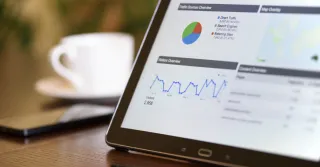ATTENTION:
Your Company is
effin' a...mazing
The online world moves fast. If your business isn't fast, your competitors will be. With the pace of progression, we help you do what you need to in order to stay relevant.
KNOW THIS FIRST
From Vision to
Fruition
Ideas are a dime a dozen, but people who implement them are priceless.*
Your idea is valuable, it takes a great deal of intellectual skill, hours upon hours of training, countless days of hard work and significant resources to become the next great hidden gem.
Our experience takes your idea and works it into a profitable business you can be proud of.

Who is effina?
What We Do
We deliver kick-ass execution through the 5 D’s of marketing: Drive, Dedication, Direction, Delivery, and Data!
Every effina team member embraces and embodies these attributes.
Our core team provides extensive online marketing experience (originating from the “good ol’ days” of the mid- and late-1990’s all the way through today). Our client portfolio consists of small businesses, mid-size companies, and even enterprise-level corporations.

Digital Marketing: A Glance into the Future
The digital marketing landscape is rapidly evolving and the future of digital marketing looks brighter than ever. With the rise of new technologies, digital marketing has become more sophisticated and... ...more
Digital Marketing
January 24, 2025•3 min read

7 Facts About SEO You Must Not Ignore
Search engine algorithms and industry trends are changing at the speed of light. If you don’t stay updated with the latest developments in the field of SEO, your website or blog will soon become obsol... ...more
SEO
January 24, 2025•4 min read

Embrace The Change
will add later will add later will add later will add later will add later will add later will add later will add later will add later ...more
Social Media
January 24, 2025•3 min read
From start to
finish effina has
what your
business needs.

Collaborate
Coming soon: effina brings an urban approach minimizing segregation from coworker spaces and providing a shared work space with resources for the small business, online and off.

Media
Digital marketing, lead generation, lead funnels, and monetization are just a few of the areas that effina specializes in to take your business from 0 to profits in 90 days.

Digital
Taking a thought from an idea to actuality: imagine your idea and then experience it. The effina team has a wide range of digital skills from design to user experience. We exemplify creativity and innovation.

Digital
Building applications, creating custom platforms, or debugging your current system: our software engineers will be the most important pieces of your company. effina makes the impossible...possible.

For some business leaders, success is defined by monetary rewards, while others say success is having a positive impact on others. What's your definition?

Travel
Looking for a competitive edge? Grab our quality travel program; use effina's incentive programs or white label our offerings. Our travel costs remain lower than most traditional booking sites.
Ready to be on
the cutting edge?
Global Access
Our CDN solution ensures fast website and web application access, no matter where your customers are.
Are You Locked Down
Our experts exceed in standards to secure you and your project. Technology constantly changes, make sure you’re not left behind.
Market Health
Campaigns faltering and no idea why? Our multi-level analytic solution won’t just tell you…it will SHOW you.
A Solid Foundation
No home stands for long on sand, nor will your company grow with irrelevant or outdated techniques.
Spread The Word
Marketing is all about telling your story. We give you the ability to get the word out across through all channels available, both online and off.
The Answer is YES
Need a custom solution or just want to improve your existing code? We have the technology…we can build it.
We perform so you profit. Our
solution-based focus keeps
your business ahead.

Doug Godkin
Managing Partner - Ameo Life
"These Guys are Amazing"
"These guys are amazing. In my fast paced business, I tell them once, and know that it's taken care of. With effina, it's set it and forget it. I love these guys, they truly are the best."

Steve Brown
Owner - Matchstick Online
"Always great to work with such pros"
"We have worked on a few projects together. Always great to work with such pros. Always available for strategy and never afraid to shoot straight with me."

Jennifer Laird
Owner - VICO Wellness
"I highly recommend effina"
"One thing I will always praise in my industry is communication and they are always on task to answer questions and bring up any concerns that I may not have seen - i highly recommend effina"
Why do most
Marketing
Newsletters
suck?
We wouldn't put out something that we wouldn't read ourselves.
We give you value you can use right away. Within a few reads, you will be part of the family and waiting for the invitation to Thanksgiving dinner.
100%
5X
750+
Irreverently Relevant Content made for Conversion
Covering the Carnage. Delivering the five D's of marketing to your inbox
Over 750 marketing professionals contribute to keep piping hot content flowing in your cup. FREE REFILLS!!
Want to work with us?
We deliver kick-ass execution through the 5 D's of marketing:
Drive, Dedication, Direction Delivery, and Data!
Every effina team member embraces and embodies these attributes!

CORE
CUSTOMER CARE
LEGAL
Copyright 2025. effina. All Rights Reserved.



